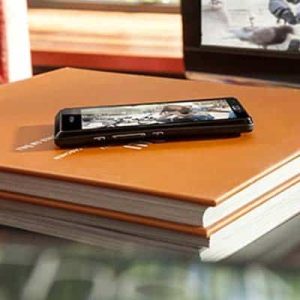Push-to-talk: Coming Up In The Digital Era
Push to talk or PTT is referred to a technology that allows the establishment of instantaneous communication between two parties at the simple push of a button. PTT is more frequently used in wireless cellular phones. Most of the significant wireless network carriers are now introducing versions of the PTT service which is known as PoC or Push to talk over Cellular.
How PTT technology works:
PTT is used in wireless cellular networks where a button is used for letting a device change from voice transmission mode to voice reception mode. The nature of the operation of cellphones utilised in such a manner bears great resemblance to the functional capabilities of a “walkie talkie”. PTT allows a phone to switch from full duplex mode where it is possible for both parties to hear each other at the same time, to half duplex mode, where it is only possible for one party to speak at any given point of time. However, there is provision for more than one party to be added to the conversation. Latest PTT systems are showing a greater inclination towards using VoIP to provide digital PTT services with the help of a 3G data network.
Why PTT should be the preferred way of communicating :
With PTT, connectivity issues will be a thing of the past as the technology establishes pathways to communicate with someone instantly with the connection time being less than one second. PTT also allows an individual to address hundreds of other users at the same time, making group communications much easier and hassle free. Apart from addressing large groups, PTT technology also lets users talk privately with other users. PTT technology plays a big hand in cost reduction as the ability to communicate with multiple people at the same time directly impacts the reduction in charges incurred by calls over a short or long distance. Researches have shown over the past years that it is possible to save on an average $17,250 over three years with the help of PTT which roughly boils down to $5,750 per year. Cost effectiveness is also achieved die to the device designs for using PTT, with the device like the Sonim XP 7 which allows PTT communication, costs incurred on mobile inventory can be significantly reduced with far lesser number of instances of damage than the current scenario. PTT enabled devices are also incredibly convenient to use as the hands-free feature assists in simplifying calls while working with heavy machinery, for example. There is ample scope for better call management as well. Provision for contacts to be stored in groups so they are easily accessible by workers and workers are also privy to user’s status so they are aware in real-time if the user they are trying to communicate with is unavailable or not. What makes PTT stand out is its flexibility and compatibility to be used with any device. PTT functionality is compatible with mobile devices from the likes of devices from major manufacturers such as Samsung, Apple, and HTC. This allows the workers the choice and the freedom to use any device they want and yet use PTT technology. Any and all PTT-enabled devices are compatible with each other.
Conclusion
PTT has proven to be a very useful method of communication and it’s convenient, cheap, and flexible features are what makes it an even more viable option. PTT allows organizations and employees to have a much more organized and controlled workflow and directly impacts in risk reduction.






